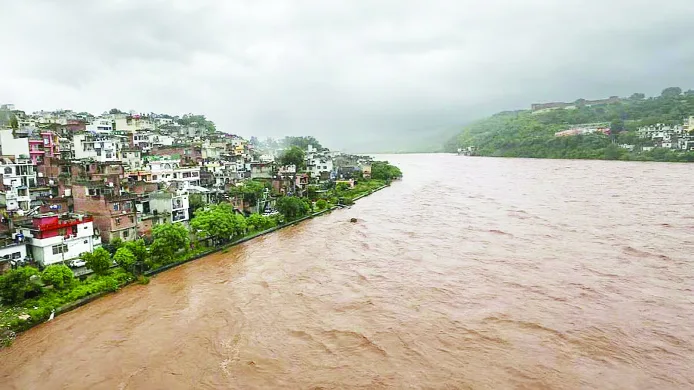The Tawi Riverfront, a flagship initiative under the Jammu Smart City Mission, has proven its resilience during recent heavy rains, standing firm against rising waters and dispelling fears of flood damage. Developed with the dual objectives of riverbank beautification and flood protection, the project is now being hailed as a model for sustainable urban infrastructure.
The project gained momentum following the devastating 2014 floods, which left large parts of Jammu waterlogged and caused severe erosion along the Tawi River. Recognizing the urgent need for a long-term solution, authorities embarked on a comprehensive riverfront development plan that combined aesthetics with robust flood mitigation strategies.
Constructed in multiple phases, the riverfront features reinforced embankments, pedestrian walkways, seating areas, lighting, and—most critically—diaphragm walls. These underground structures, extending 10 to 12 meters deep and two feet thick, are engineered to resist high water pressure and prevent soil erosion. Their watertight design prevents seepage, ensuring that riverbanks remain intact even during extreme flooding.
During the recent spell of torrential rain, the river swelled dramatically, and a section of the Bhagwati Nagar bridge collapsed, triggering widespread concern. However, the Tawi Riverfront held firm. The entire one-kilometre stretch from the barrage remained unaffected, with no signs of erosion, cracks, or seepage—an outcome attributed directly to the diaphragm wall technology.
Post-flood inspections by engineers and Smart City Mission officials confirmed the structural integrity of the riverfront. The thorough assessment reported no damage, bringing a sigh of relief to both technical teams and city residents. Experts have since pointed out that the collapsed portion of the Bhagwati Nagar bridge lacked similar protective structures—a shortcoming that is now being addressed in the reconstruction plans, with diaphragm walls to be mandatorily included.
Beyond its technical merits, the Tawi Riverfront has transformed into a vibrant public space, adding recreational and aesthetic value to the city. With walkways and river-facing steps, the site has become a new leisure destination for residents and tourists alike. But its most critical contribution remains safeguarding thousands of homes and businesses along the riverbanks.
“In the past, even moderate rainfall would cause significant waterlogging. Now, even during major floods, the water stays contained within the river channel,” said an official associated with the project.
The Tawi Riverfront joins a growing list of successful riverfront initiatives across India and abroad, including the Sabarmati Riverfront in Ahmedabad, the Gomti Riverfront in Lucknow, and riverbank protection projects in Bhutan. In each case, diaphragm wall technology has emerged as a reliable solution for flood management and urban resilience.
Urban planners and infrastructure experts are now calling for this model to be replicated in other vulnerable cities. The recent floods have reinforced a critical lesson: urban infrastructure must prioritize risk mitigation over cosmetic upgrades.
As cities across India contend with the growing impact of climate change, the Tawi Riverfront stands as a testament to the power of integrated urban planning, modern engineering, and long-term vision. More than just a beautification effort, it is a resilient shield—one that protects, enhances, and redefines the very edge of Jammu city.






